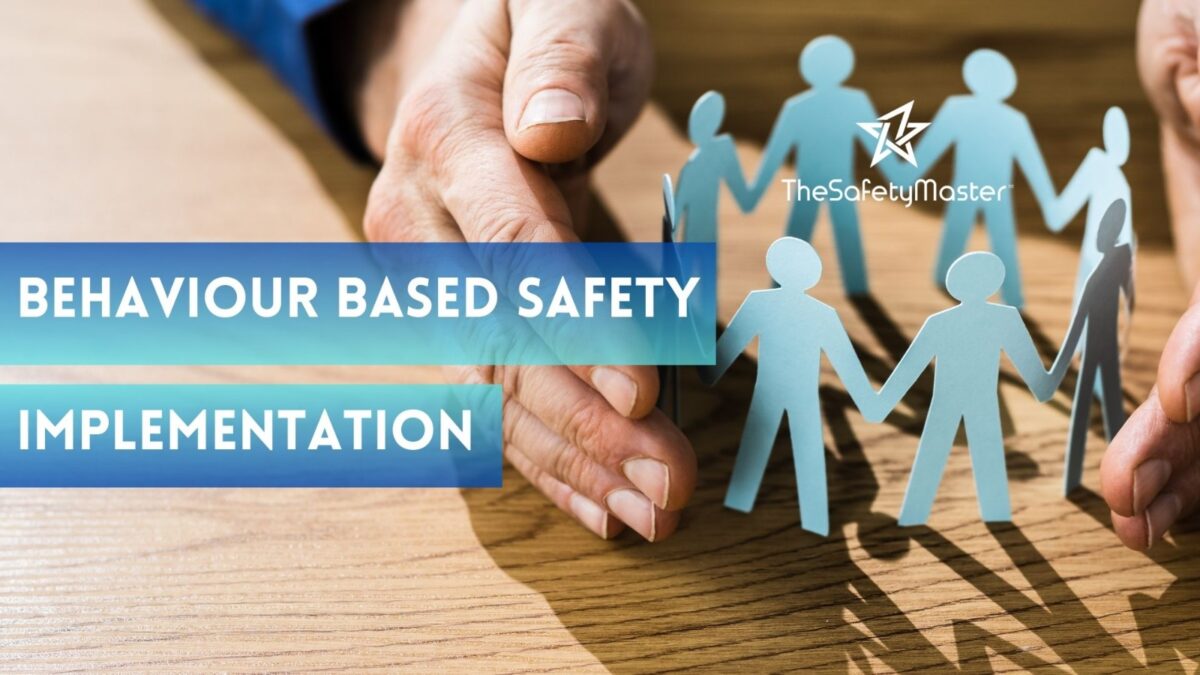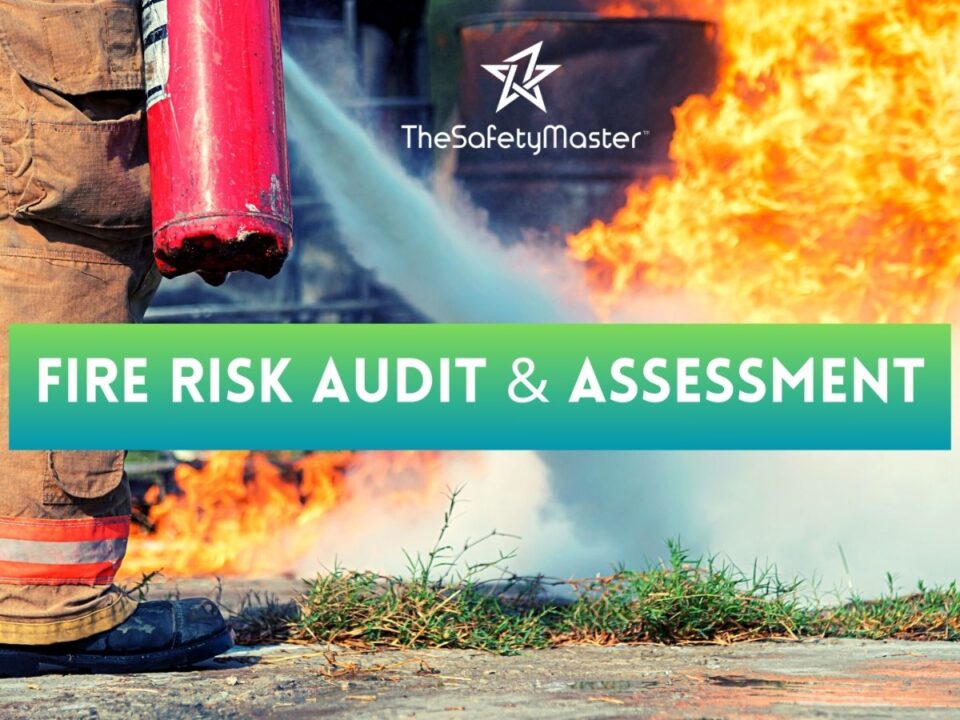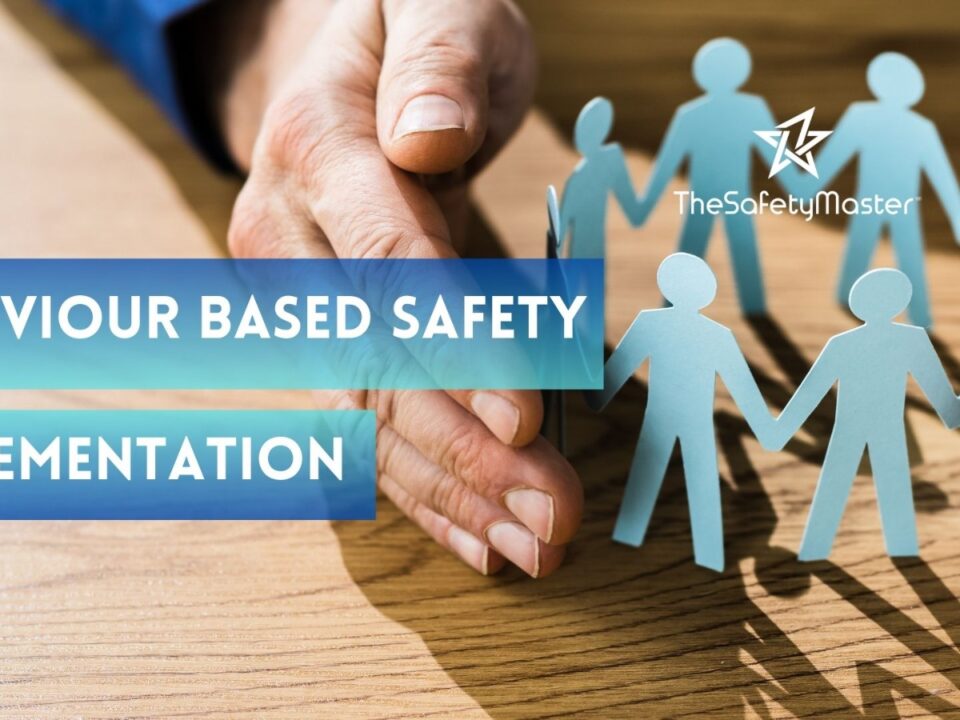The 5 Key Steps for a Successful Behavior Based Safety Implementation Process in the Workplace

A Step Towards Sustainable Growth: How Safety Audits Foster Industry Development in India
March 13, 2025
Best Practices for Conducting an Effective Process Safety Audit – The Safety Master
March 13, 2025In this article, we delve into the crucial steps necessary for a seamless and effective implementation process of Behavior Based Safety (BBS) in the workplace. With safety being of paramount importance in any organization, it is essential to establish a systematic approach that fosters a culture of safety among employees. By following these five key steps, you can confidently navigate the implementation journey, ensuring that your organization reaps the benefits of a successful BBS program. From identifying safety goals to providing comprehensive training, we promise to equip you with the knowledge and strategies needed to create a safer and more productive work environment. So, join us as we unlock the secrets to a successful BBS implementation process.
Introduction
Every workplace, regardless of its industry or size, strives for a safe and healthy environment for its employees. However, the reality is that accidents and incidents still occur, posing risks to both the well-being of individuals and the productivity of organizations. This is where Behavior Based Safety (BBS) comes into play – a proactive approach that focuses on identifying and modifying unsafe behaviors to prevent accidents before they happen. In this article, we will delve into the 5 key steps necessary for a successful implementation of Behavior Based Safety in the workplace. By following these steps, organizations can foster a culture of safety, reduce incidents, and ultimately create an environment where employees feel valued and protected
Understanding Behavior Based Safety (BBS)
In comprehending the intricacies of Behavior Based Safety (BBS), one must delve into the depths of human behavior and its impact on workplace safety. BBS is a proactive approach that emphasizes the significance of individual actions and their influence on overall safety outcomes. It recognizes that human behavior lies at the core of accident prevention, surpassing mere compliance with rules and regulations.
To truly grasp the essence of BBS, it is imperative to acknowledge its underlying principles. BBS asserts that behaviors are shaped by a variety of factors such as attitudes, beliefs, values, and environmental influences. By understanding these determinants, organizations can effectively design interventions to modify behaviors positively.
A thought-provoking aspect of BBS is its emphasis on creating a culture of safety rooted in trust and collaboration. Rather than focusing solely on punitive measures or blaming individuals for accidents, BBS seeks to foster an environment where employees feel empowered to take responsibility for their own safety and that of their colleagues. This paradigm shift instills a sense of ownership among workers while encouraging them to be vigilant about identifying potential hazards and adopting safe practices.
By comprehending the nuances of Behavior Based Safety (BBS) within the workplace context, organizations can unlock a multitude of benefits: reduced accident rates, improved overall employee well-being, enhanced productivity levels, and an organizational culture that prioritizes safety above all else. Embracing BBS empowers both employers and employees alike to embark on a journey towards achieving excellence in workplace safety standards
Step 1: Establishing Leadership Commitment and Support
Step 1: Establishing Leadership Commitment and Support The commencement of a successful Behavior Based Safety (BBS) implementation process rests upon the sturdy foundation of leadership commitment and support. In this crucial first step, it is imperative for the organization’s top management to not only acknowledge the significance of safety but also actively participate in fostering a culture of safety excellence. Strong leaders play a pivotal role in shaping the attitudes, behaviors, and overall mind-set of their workforce in relation to safety.
Leadership commitment entails more than mere lip service – it necessitates genuine dedication and visible actions that prioritize employee well-being. By consistently demonstrating their unwavering support for safety initiatives, leaders can inspire trust and confidence among employees. They should actively engage in safety discussions, visibly promote safe practices, allocate necessary resources for training programs, and regularly communicate about the importance of safe behavior. Through leading by example, leaders can create an environment where safety is seen as a core value rather than an afterthought.
By establishing leadership commitment and support at the outset of a Behavior Based Safety implementation process, organizations can cultivate a culture where employees feel empowered and motivated to prioritize their own safety as well as that of their colleagues. This proactive approach not only fosters a positive work environment but also enhances productivity by minimizing accidents and injuries. Remember, true leadership lies not just in words but in consistent actions that inspire others to embrace safety as an integral part of their daily lives.
Step 2: Conducting a Thorough Risk Assessment
In the realm of implementing Behavior Based Safety (BBS), conducting a thorough risk assessment stands as a pivotal step. Just as an artist meticulously studies their canvas before applying brushstrokes, evaluating workplace risks is crucial for creating a safe environment. This process involves identifying potential hazards, assessing their severity and likelihood, and prioritizing them accordingly. By delving deep into the intricacies of the workplace, one can uncover hidden dangers and lay the foundation for impactful safety measures. When embarking on a risk assessment journey, one enters a realm where every detail matters. The faintest flicker of unattended machinery or the subtlest hint of inadequate protective gear can be the difference between tragedy and triumph in the workplace. With unwavering attention to even the most minute elements, safety professionals navigate this terrain with expertise and precision. By dedicating time to thoroughly examine each task, workstation, or workflow, potential hazards are revealed and can be addressed effectively.
Though it may seem daunting at first glance, conducting a risk assessment brings forth an opportunity for optimism – a chance to transform workplaces into havens of safety. It allows for proactive measures that not only protect employees from harm but also foster an environment where everyone feels valued and supported. Through this comprehensive process, organizations gain insights into potential risks while empowering individuals to actively participate in shaping their own safety culture
Step 3: Defining Safety Critical Behaviors
Defining Safety Critical BehaviorsIn this crucial step of the behavior-based safety implementation process, it is imperative to identify and define the specific safety critical behaviors that employees need to exhibit. These behaviors serve as the foundation for creating a safe working environment and preventing accidents or hazards.
To begin, a comprehensive analysis of job tasks and potential risks must be conducted. Through observation, data collection, and input from employees, a list of safety critical behaviors can be compiled. This could include actions such as wearing personal protective equipment (PPE), following proper lockout/tagout procedures, or reporting near misses.
Defining safety critical behaviors aligns expectations among employees and provides clarity on what constitutes safe work practices. By clearly communicating these expectations through training programs and visual reminders in the workplace, employees are empowered to take ownership of their own safety and contribute to the overall success of the behavior-based safety program.
Step 4: Implementing Training and Communication Programs
Implementing Training and Communication Programs: Communication is the lifeblood of any successful behavior-based safety implementation process. To ensure that employees understand the importance of safety critical behaviors, comprehensive training programs must be developed and implemented. These programs should not only educate employees on the desired behaviors but also provide practical examples and scenarios to enhance their understanding.
Training sessions can be designed to include interactive elements such as role-playing exercises, group discussions, and case studies. This promotes active participation and encourages employees to apply their knowledge in real-life situations. By fostering a culture of continuous learning, organizations can empower their workforce to actively contribute to a safer work environment.
In addition to training programs, effective communication channels must be established to keep everyone informed about safety-related updates, incidents, and best practices. Utilizing various mediums such as newsletters, posters, intranet platforms, and regular team meetings can help reinforce safety messages and maintain a constant dialogue with employees.
Remember that effective communication is a two-way street; organizations must encourage feedback from employees regarding potential hazards or suggestions for improvement. Creating an open atmosphere where individuals feel comfortable sharing their concerns fosters a sense of ownership for safety within the workforce.
By investing in robust training initiatives and establishing efficient communication channels, organizations can create an environment where safety becomes second nature to every employee. This not only minimizes the risk of accidents but also cultivates a positive work culture where everyone feels valued and empowered in contributing to workplace safety initiatives.
Step 5: Monitoring, Measuring, and Continuous Improvement
Monitoring, Measuring, and Continuous Improvements the adage goes, “What gets measured gets managed.” Monitoring and measuring the effectiveness of your behavior based safety implementation process is essential to ensure its success. Implementing a robust monitoring system allows you to identify trends, patterns, and areas for improvement. Regularly collecting data on safety performance indicators provides valuable insights into the overall effectiveness of your safety initiatives.
Continuous improvement is at the heart of any successful behavior based safety program. It involves analyzing data, identifying areas where safety behaviors can be enhanced, and implementing targeted interventions. By embracing a culture of continuous improvement, organizations foster a proactive approach towards workplace safety. This mindset encourages employees to actively engage in identifying potential hazards while striving for excellence in their safe work practices.
Remember that monitoring and measuring should extend beyond mere compliance with policies and procedures. Look for opportunities to recognize positive behaviors and celebrate successes throughout the organization. By highlighting achievements and progress toward safety goals, you will inspire employees to continually raise the bar and create a workplace culture that values safety as a top priority.
In conclusion, monitoring, measuring, and continuous improvement are vital components of a successful behavior based safety implementation process. By regularly assessing performance metrics, analyzing data trends, promoting a culture of continuous improvement, and recognizing positive contributions towards creating a safe work environment – organizations can ensure sustained progress in their quest for excellence in workplace safety.
Conclusion
In conclusion, the implementation of a Behavior Based Safety (BBS) process in the workplace is a crucial step towards creating a safer and more productive work environment. By following the five key steps outlined in this article, organizations can establish a strong foundation for safety culture and make significant progress in reducing accidents and improving employee well-being. As leaders commit to supporting BBS, conduct thorough risk assessments, define safety critical behaviors, implement training programs, and continuously monitor and improve safety performance, they pave the way for a brighter future marked by heightened awareness and proactive measures. With diligent adherence to these steps, we can foster a work environment that prioritizes the well-being of employees while ensuring organizational success.




